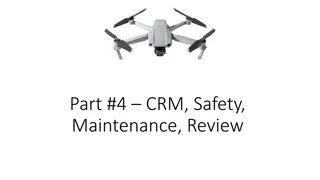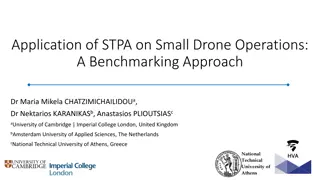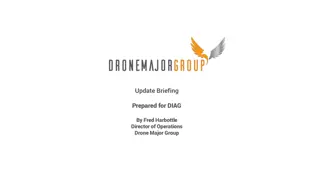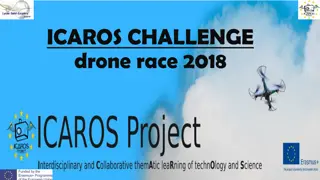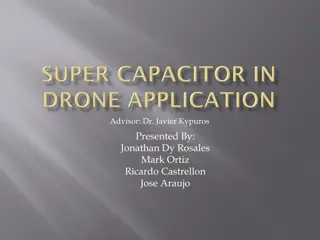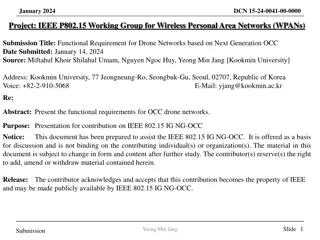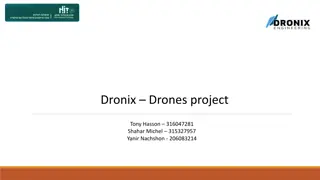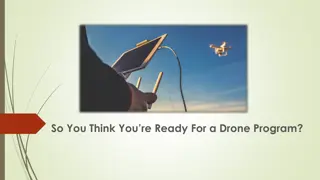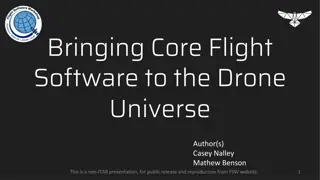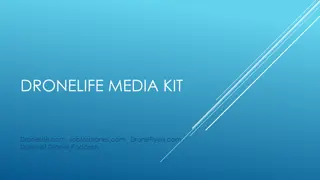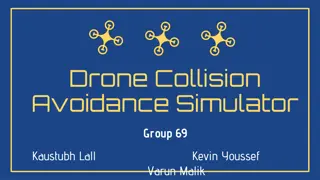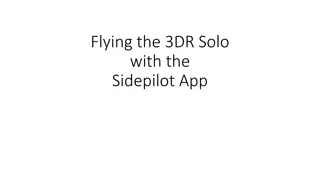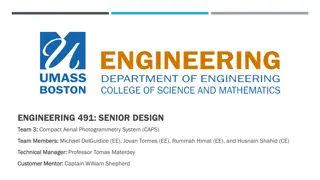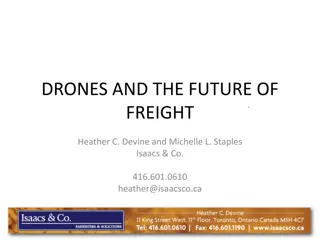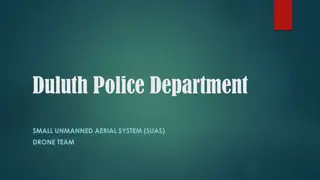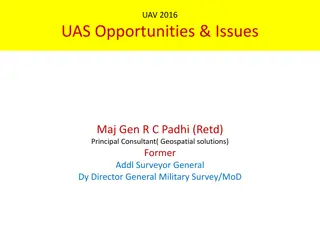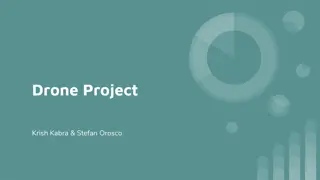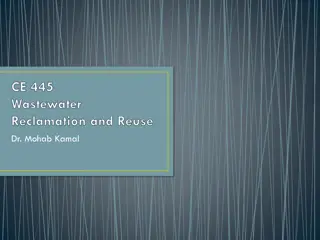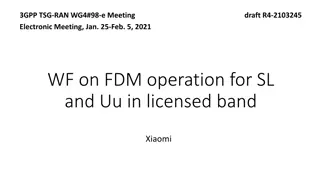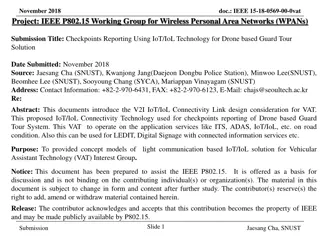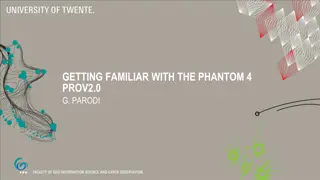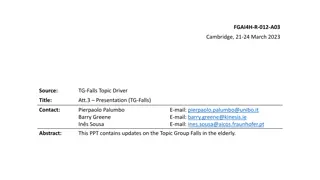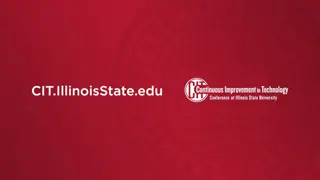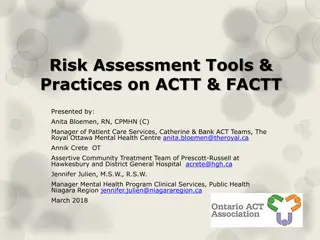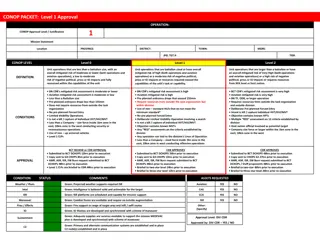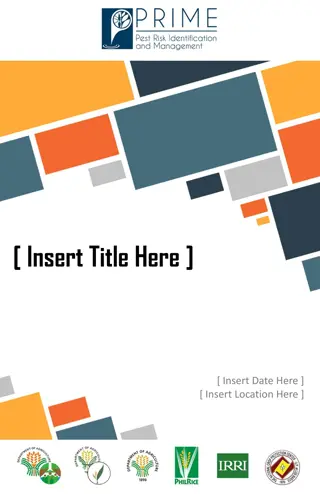Innovative Solutions for Drone Operation Risk Assessment
Working groups within IAG focus on key aspects such as UTM integration, public perception, and tackling challenges associated with OSC risk assessments. Participants from various organizations collaborate to develop interactive tools and strategies to ensure the reliability and sustainability of drone operations.
Download Presentation

Please find below an Image/Link to download the presentation.
The content on the website is provided AS IS for your information and personal use only. It may not be sold, licensed, or shared on other websites without obtaining consent from the author. Download presentation by click this link. If you encounter any issues during the download, it is possible that the publisher has removed the file from their server.
E N D
Presentation Transcript
IAG working groups Alfie Jackson Senior Strategist, Transport Systems Catapult
IAG can do Background Background UTM integration IAG can influence Reliable robust system OSC Beyond control of IAG UTM definition Sense + avoid, Electronic ID IAG actions Spectrum availability & sharing capacity Market factors Commercial sustainability (Ops, BVLOS etc.) Comms UK lead Developmental airspace Routine commercial operations BVLOS UTM rollout Nominated Airspace Drone DVLA IT infrastructure for ATM/UTM Business case Public acceptance Public acceptance Commercial operating framework Regulatory toolbox Validation + enforcement Market pull
Working groups OSC group Propose method to tackle challenges associated with today s OSC risk assessment procedure DevSpace group White paper outlining requirements and possible solutions for Development space Public and Commercial perceptions plan for handling issues around public attitudes and defining possible routes to increasing the awareness of drone services in other industry
Group participants OSC PARTICIPANT Phil Binks Mike Gadd Graham Brown Rupert Dent James Dunthorne David Walters Devspace PARTICIPANT Phil Binks Graham Brown Geoff Pugh Nick Rogers Rikke Carmichael Gavin Goudie Public perception PARTICIPANT Craig Roberts Graham Brown Ian William-Wynne Gavin Goudie Philip Tarry ORGANISATION Altitude Angel Altitude Angel ARPAS ARPAS ARPAS ORGANISATION Altitude Angel ARPAS Consortiq Sky-Futures Network Rail ORGANISATION PWC ARPAS Blue Bear Systems Research Halo Drones Blue Bear Systems Research British Standards Institute Consortiq Blue Bear Systems Research Rikke Carmichael Network Rail Simon Merriman Geoff Pugh Kathy Nothstine NESTA Simon Ritterband Moon rock Insurance Cranfield Stuart McGlynn Philip Tarry Simon Ritterband Nick Rogers Cyberhawk Halo Drones Moon Rock Insurance Sky-Futures Iain Gray
OSC group Summary of outputs Working group has drafted a proposal for a 3-stage project: 1. To develop an interactive tool (e.g. web-based, app) to support the development of risk-assessments by operators by highlighting ground/air-risk considerations 2. Evolution from generic risk-assessment methods to addressing more specific scenarios 3. Explore initial methods to quantify the operational risk post-mitigation strategy
OSC group Progress Initially, working group explored the development of standard scenarios; the group then migrated towards addressing challenges faced by both the regulator and the operators Issues None group were well motivated Next steps Formal review of proposal by wider IAG
DevSpace Summary of outputs Main issues highlighted were complexity of applying for permissions to test new applications and the lack of a formal notification system to enable more complex UAV testing within a given area. It was highlighted as essential that any solution did not require formal changes to airspace or have major impact on other airspace users. 1) NOTDO/DROTAM (TBC) notification of drone activity within a given area, could specify minimum equipage levels etc. 2) Collective OSC Possiblity to create an overarching OSC within an area to cover certain types of operation that organisations could then sign-up to, OSC would need to specify things such as:] Minimum equipage levels Minimum currency and competency levels Rules of the air
DevSpace Progress Initial workshop to cover challenges and potential solutions High level draft document with section headers and outline content Issues Ability to commit time and resource to the working group Disagreement over best approach Overlap with areas of the OSC working group Next steps IAG to decide if this group is a priority and whether we want to take it forward if so, how can we increase time committed to it?
Public Perception Summary of outputs Perceived lack of awareness among industry customers Risk of negative public perception Prioritised and considered the following groups: Commercial Supply and demand sides Public Users & Public Non-Users Commercial Perceptions (Demand side): Produce recommendations for cross-sector development Engage with trade bodies to promote business cases Public Perception (Non-users): Reviewed existing studies of public perception of drones, to identify need for action and most significant concerns. Outcomes:- Highlight and share positive user stories, especially in Blue lights or Infrastructure monitoring use cases. Identify a strategy to address privacy & misuse concerns.
Public Perception Progress Agreement on group purpose, and prioritisation of activity areas (user groups). Collated existing public perception studies. Results used to prioritise messaging (initial proposal). Little equivalent information available for commercial requirements. Generated initial proposal for identifying these needs, by leveraging trade bodies. Issues Groups lacks time to execute some activities (e.g. collation of materials, dissemination). Lack of dedicated resources may inhibit future progress. Next steps Suggest 1/2 day workshop to: Agree actions, messages and channels for public perception activity. Agree sector prioritisation and questionnaire for commercial data gathering. Delegate execution of messaging. Identify funding requirements and sources.
Key Questions OSC Do we agree on the proposed project? Where is the resourcing going to come from? Devspace Does the IAG wish to continue with this working group at this point? If so, what needs to change? Public Perception Who will take lead for the next quarter? How much time and resources can the IAG dedicate to the working group?



